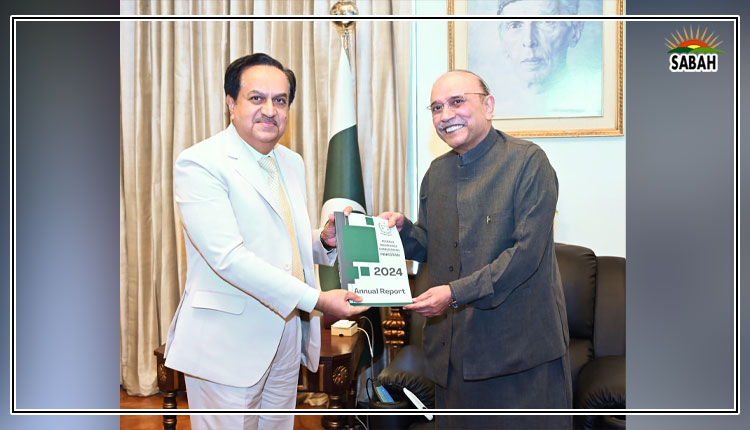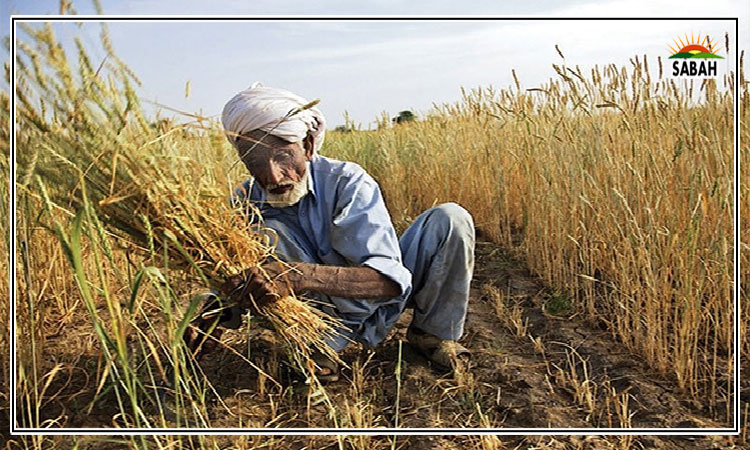How Pakistan can transform its agricultural sector ….Daud Khan & Ghasharib Shoukat
In 2023, amidst global economic challenges, Pakistan’s agriculture sector emerged as an engine of growth, expanding by 6.5% and driving the country’s modest GDP increase of 2.38%.
The government has set a target growth rate of 3.6% for the coming year. While manufacturing and services, particularly IT, are often highlighted for their growth potential, the agricultural sector’s ability to reduce poverty and boost exports should not be overlooked.
With new strategies and policies being formulated with the help of specialised international experts such as Professor Decron from Oxford University, it is crucial that the agricultural sector receives top priority in these plans.
One of the most urgent issues facing Pakistan’s agriculture is the need for reform in land ownership and the land market. The best and most productive agricultural land is predominantly held by large farmers who are not focused on maximising yields or production. Many of these landowners are absentee landlords, living far from their properties, and leaving management in the hands of farm managers whose primary role is to extract rents from tenants rather than increase agricultural productivity.
This situation is further compounded by the reluctance of large landowners to sell or lease their land to smaller, more efficient farmers or entrepreneurs eager to invest in agriculture. Even when land is put on sale, it is often at prices out of line with potential earnings.
The discrepancy between land prices and earnings is not just an economic issue but a political one. Land ownership in Pakistan is tied to political power and access to government spending. In areas close to cities or major transport arteries, land also offers opportunities for conversion into residential colonies.
To correct these imbalances, the government must limit or eliminate programmes that disproportionately benefit large landholders, such as the wheat procurement program and blanket fertiliser subsidies. Additionally, revising the tax-free status of agriculture to align with income taxes in other sectors is essential. Complementary measures, such as banning the conversion of agricultural land into residential schemes and further streamlining and computerising the processes for land transfer, sale and leasing are also crucial.
Raising production and productivity in agriculture is not just about increasing quantities but about maximising the revenue generated from land and water resources. A prime example is the production of sugar – a crop that consumes vast amounts of land and water but remains viable in Pakistan only due to government protection. By removing this protection and allowing free imports of sugar, resources could be redirected towards more profitable crops like rice, fruits and vegetables, which offer higher incomes and greater export potential.
Another critical area of reform is the availability of high-quality seeds and genetic material for livestock. The government should incentivise local seed production, but also liberalise the import of hybrid seeds and GMOs, which have the potential to increase yields by 30-50%. Furthermore, expanding the availability of land to commercial and corporate farming enterprises, particularly in regions where climate change and shifting rainfall patterns make cultivation viable, would help boost the production of essential crops like wheat.
Another priority should be the downsizing or abolition of ineffective government institutions at both the federal and provincial levels. At the federal level, this could include institutions tasked with policy and strategy formulation that have produced few worthwhile documents or those responsible for coordinating and managing research efforts but rarely hold meaningful meetings with provinces and the private sector. At the provincial level, departments of extension are prime examples. Often staffed by tens of thousands of workers, many of these departments are filled with “ghost workers” who only show up to collect their salaries. Even when these workers conduct field visits, farmers often ignore their advice in favor of guidance from input sellers or traders.
The funds saved by abolishing such ineffective institutions should be redirected to targeted programs that support dynamic production systems. An example of this is the spontaneous production clusters that have emerged across the country for dates, citrus, bananas, and sesame. These clusters should receive support in adopting new technologies and best practices from around the world. Another high-priority initiative would be to encourage efficiency and innovation by supporting the growing number of agro-tech companies across Pakistan.
Strengthening the Ministry of National Food Security and Research (MNFSR) is another critical action area. Despite agriculture being a provincial subject, the MNFSR has a crucial role, particularly in managing imports and exports, including wheat. Recent crises in the wheat market have highlighted the Ministry’s limited capacity, which has had dire consequences for domestic producers and consumers. Strengthening this Ministry would ensure better management of critical agricultural resources and more stable markets.
Pakistan’s agricultural sector holds enormous growth potential but is currently hampered by inefficiencies, an outdated product mix, and high losses during transport, storage, and marketing. However, both domestic and international technologies are available that could quickly improve productivity.
Relaunching agriculture in Pakistan does not require more government spending but smarter spending. Most existing government projects and programmes in the agricultural sector are ineffective and wasteful and should be eliminated. Instead, the government should focus on creating an enabling policy environment that encourages private sector investment, with its role limited to regulation and the provision of public goods such as new technologies.
For Pakistan to unlock its agricultural potential and ensure economic prosperity, the government must act swiftly on these reforms. Stakeholders from all sectors should collaborate to drive these changes forward. Now is the time to secure a sustainable agricultural future for Pakistan.
Courtesy Express Tribune











